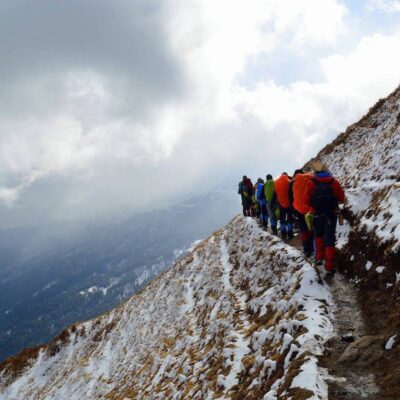
Things to know before heading to Sikkim
Sikkim is one of the smallest states in India, covering an area of approximately 7,096 square kilometers. This small country is full of miracles and beauty. Here you can see snow-capped mountains, green valleys, colorful azaleas, luscious waterfalls, and vast tea gardens. You can also find your peace in the monastery. The state is a good place to travel. So, based on our experience, here we will tell you everything you need to know to visit and traverse the state.
Sikkim can be divided into four regions: east, west, north, and south. Tourism here also has the same division. Gangtok is the main city, wherever you go, you can start from Gangtok.
East Sikkim:
Gangtok, the capital is located in East Sikkim. To learn about the historical sites of Gangtok, visit our previous blog post on Gangtok.
If you want to visit East Sikkim, a trip to the Silk Road is also an option. Visit Altar and Zuluk to learn about the ancient trade routes between India and Tibet.
West Sikkim – This part of
has one of the best views in the mountains. Pelling is a picturesque hill station with magnificent views of the mountains. Kangchenjunga mountain range. From Palin, you can go to Pemayangtse, Kechepari Lake, Legship, and Yuksom.
Go a little further and visit the shady towns of Ohkrey, Rinchenpong, and Kaluk, and enjoy the magnificent view of the mountains. If you want to see rhododendrons in full bloom, please visit the Basai Rhododendron Reserve. But to see the colorful azaleas in full bloom, you must visit Basel in April.
North Sikkim:
North Sikkim is the largest and most remote area. To visit North Sikkim, you need to obtain a permit. Visit the sacred lake of Gurudongma through the small town of Lachin. It is said that by visiting Gurudongmar, all your wishes will come true. This place really looks like a postcard.
You can then visit Yuntang Valley. The valley is called the Valley of Flowers because of the various azaleas and seasonal flowers that bloom here. In May and June, the whole place becomes colorful.
These two places are not the only wonders in North Sikkim. The hidden gem is undoubtedly Dzongu. Dzongu is a Lepcha reserve and a perfect town. Imagine some small wooden houses and white prayer flags fluttering in front of them! Zonggu is a place with enthusiastic people and beautiful scenery.
South Sikkim:
Visit Nanchi, Chatham and the mighty Samdrutz in the southern region. Be intoxicated by the charming Temi Tea Gardens. Visit Ravangla, Ralong and Borong, enjoy a wonderful stay, and see rare Himalayan birds.
In addition to these famous places, some small villages are operating as eco-tourism spots. These small towns have homestay families, and tourists are welcome all year round.
Some facts about Sikkim:
Best time to visit:
It is best to avoid the monsoon. During the monsoon, in addition to bad weather, landslides may also occur.
Mode of transportation:
Public or private vehicles. For a trip to North Sikkim, you must obtain the required permit with the help of a travel agency. To visit the Nathu La Pass, a permit is required. How to get there:
Bagdogra is the closest airport and NJP is the closest rail hub. You can take a shared jeep from NJP or Siliguri to Gangtok. The main cities and towns are connected by shared vehicles, but the number of vehicles is small, you need to check the time of the shared jeep.
Sikkim prohibits smoking in public places. The same goes for plastics. They attach great importance to cleanliness. So in Sikkim, don’t throw the wrapping paper anywhere on the road, you may be punished for it.
Chalamthang has not seen any Sikkim tour packages. For those who seek solitude in nature, a town is a perfect place. Hope it will stay the same in the next few days.
Chalamthang Homestay
Chalamthang literally means “Orange Farm” in the local Lepcha language. Although we didn’t see many orange trees when we went in January, I think there are orange trees everywhere in town!
Homestay – Known as the Chalamthang Homestay, it is just a few meters from the main road. You have to walk to get to the host family. There is a clear path from the steps that lead to the host family. After almost reaching the bottom of the steps, there is a huge telephone tower. A narrow path leads to Chalamthang Homestay. B&B is located on the edge of the mountain, offering stunning views of the Himalayan hills, valleys and the winding Tista River. When we arrived at the host family, we were greeted by a quaint cottage. The room is separated from the owner. The homestay has 4 rooms.
It is the Machan area that completely disappoints me. It’s actually a hanging rest area, and the organizers also call it a watchtower. From Machan, we can see a panoramic view of the surrounding mountains and the Teesta Valley. On a clear day, the landscape will be beautiful. The thatched-roof Machan Hotel has a lounge area with sofas, chairs and a center table. Here, guests can simply sit and enjoy the beautiful scenery while enjoying a cup of tea or coffee. Eat breakfast










